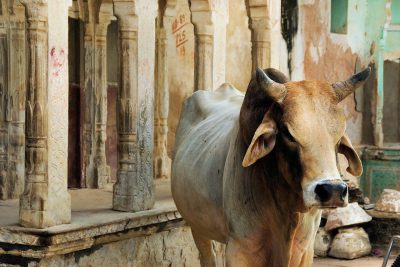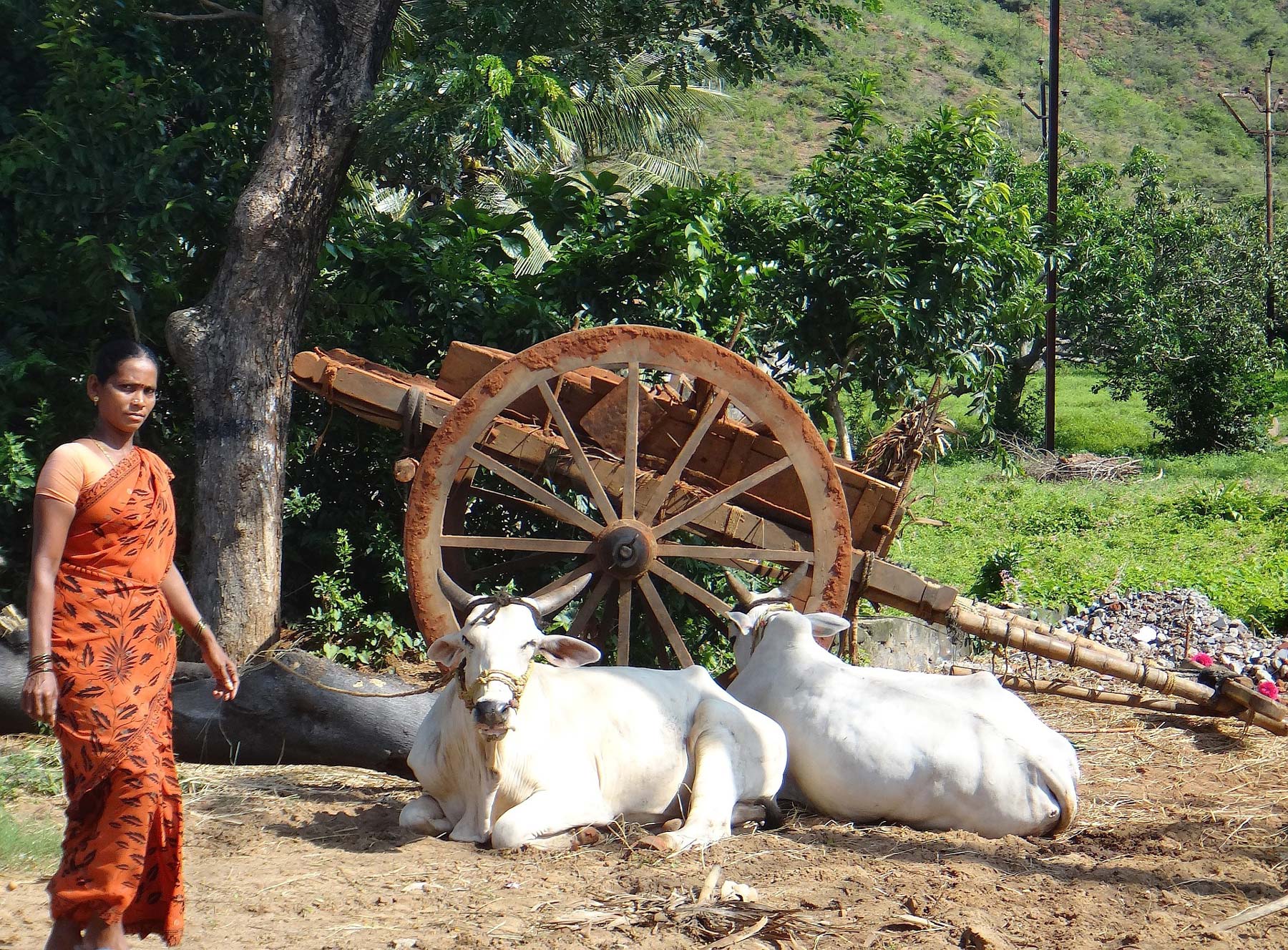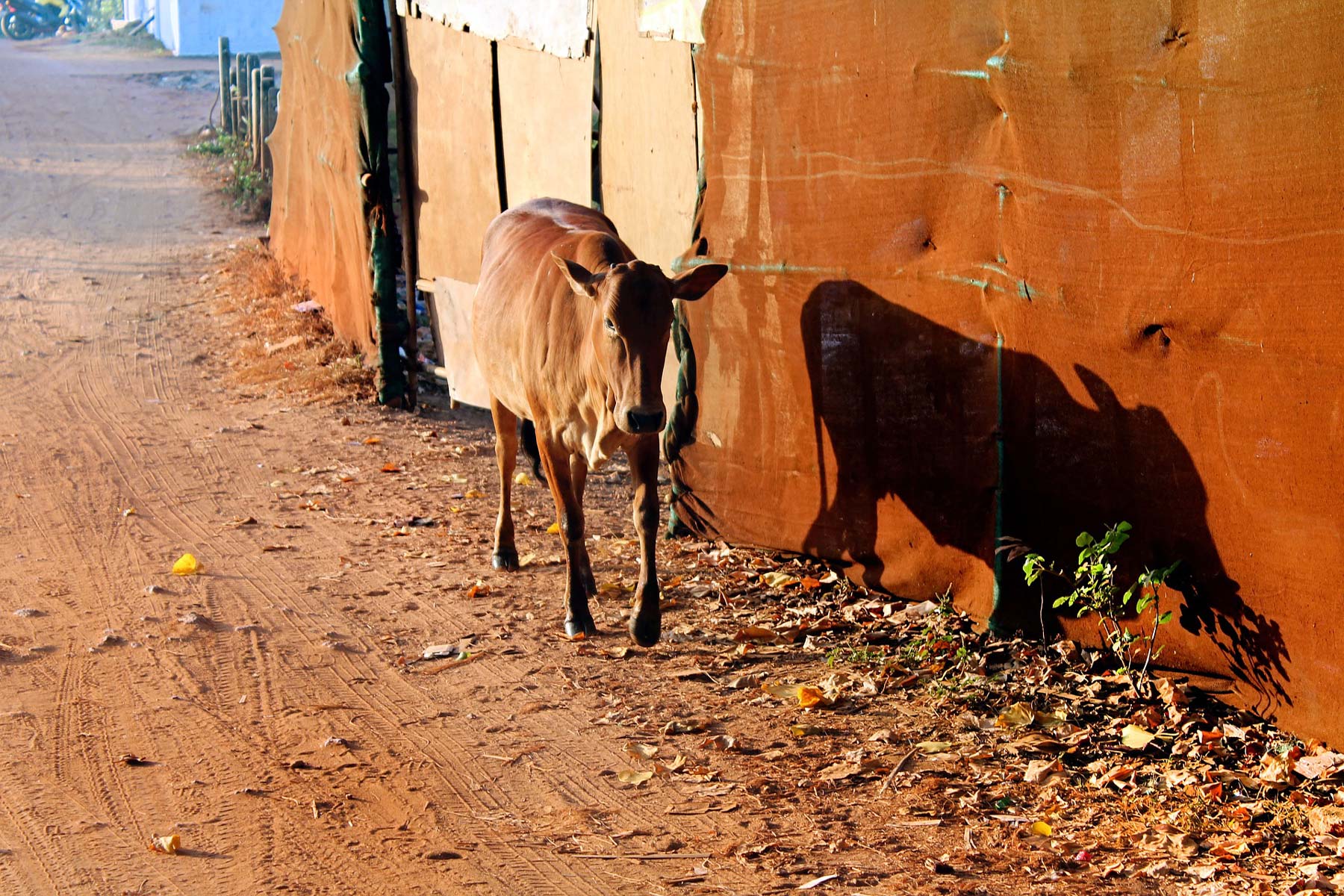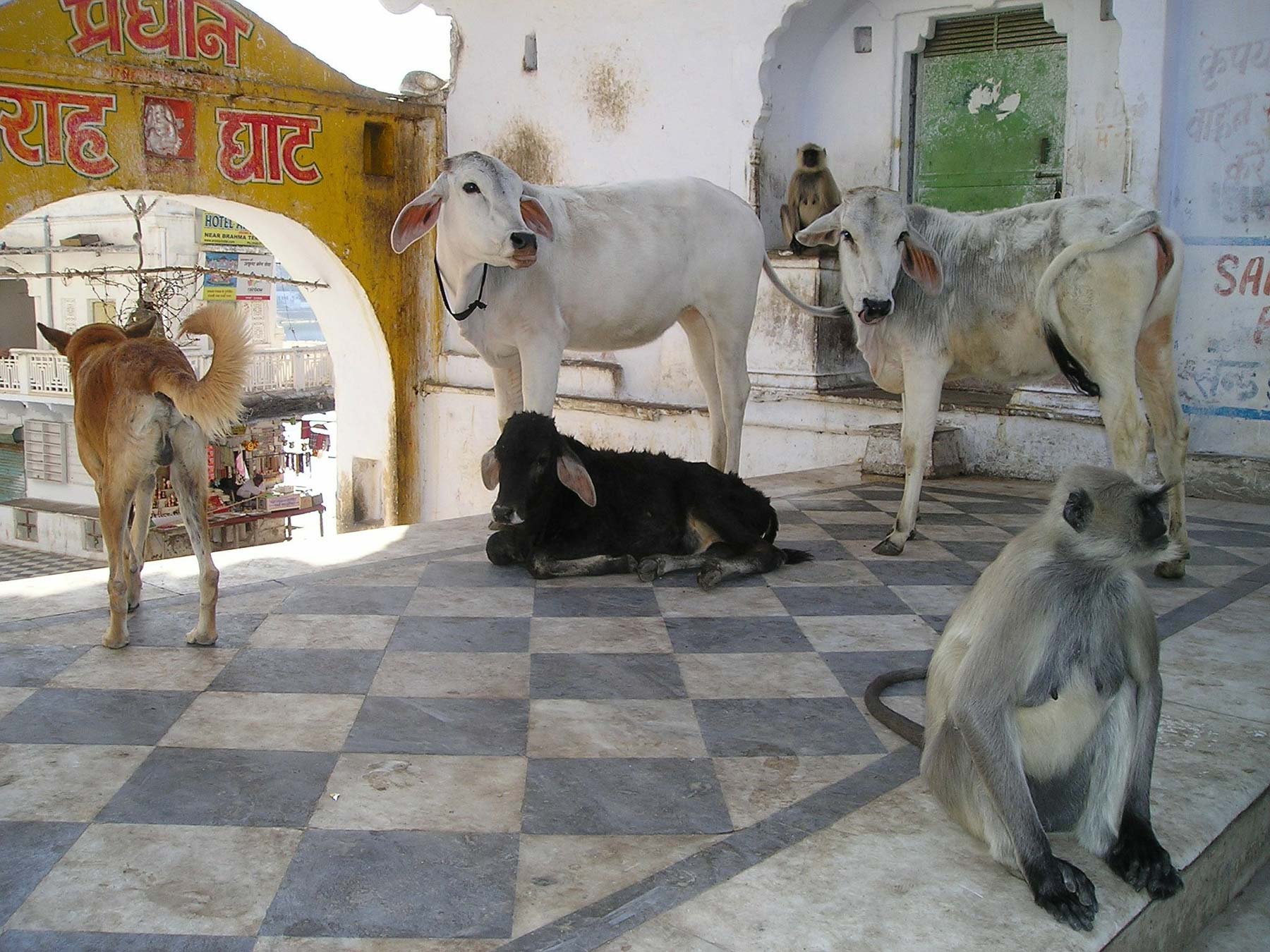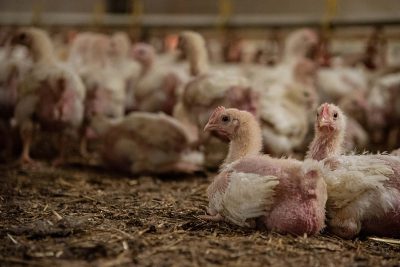Estimated reading time: 6 minutes
Cows are farmed all over the world, and yet this industry inflicts some of the most appalling emotional and physical suffering on animals.
What Is Cow Farming In India?
To the 800 million Hindus in India, cows are considered sacred, and in many states there is a ban on slaughtering them but this does not mean they don’t suffer. When no longer optimally productive, they may be turned out into the street, sent to a gaushala (which are supposed to be sanctuaries), or trucked over state lines to slaughterhouses.
Types Of Cow Farming In India
India is the largest producer and consumer of milk in the world. This requires millions of farms and they come in all sizes.
Household Cow Farming
In rural areas, it is very common for families to keep a cow for her milk. In fact, there are around 80 million rural households doing just this.
Commercial Cow Farming
If a household can keep more cows, and sell the excess milk on, it provides a little income for the family, especially in areas of low employment. There are many small-scale farms with just a couple of cows, but other farms are immense, and keep thousands of animals in intensive, factory farm conditions.
Is Cow Farming Profitable In India?
It is profitable, sadly. Not only do Indians consume a lot of milk domestically (despite 60 percent of Indians being lactose intolerant), exports are rising sharply, too.
Which Is The Biggest Dairy Farm In India?
This would probably be Dudhsagar Dairy in Gujarat. It is a member of the Gujarat Cooperative Milk Marketing Federation, also known as Amul, which is the largest dairy company, taking milk from around 3.6 million farms.
How Are Cows Farmed In India?
That very much depends whether they are kept by a family for their milk or whether they are farmed commercially. Some cows live more freely than others while others may spend their entire lives secured to a post by a rope through their nose. Seventy-nine percent of the 451 dairies investigated by animal protection organization FIAPO kept cows tethered all day every day.
Food
Cows may graze, be fed fodder such as dried grasses, and may also be given oil cake, wheat bran and gram husk. They will only be fed while they are of use and those who are turned out to fend for themselves are often so hungry they will eat garbage. Karuna Society for Animals & Nature, which is based in Andhra Pradesh, regularly removes up to 70 kilos of plastic rubbish from the stomachs of these poor animals.
Shelter
Some cows will have shelter from the harshest weathers, others won’t. For many, shelter means being crammed into overcrowded pens or being tied up so tightly that the rope embeds in their flesh. FIAPO’s investigation found that cows kept in urban areas get little access to soft ground and “spend their lives in cramped, poorly ventilated and dark enclosures”.
Hygiene
Hygiene is important for the animals’ welfare but FIAPO found that many farms were so filthy, animals were slipping in their own excreta. They found that 64.1 percent of dairies had ill, injured and distressed cattle.
Care
All too often, cows are treated like milk-producing machines. They are genetically manipulated and pumped with antibiotics and hormones to make them produce more milk than is natural. There is little care taken. FIAPO found veterinary care was poor and illegal use of drugs and hormones such as oxytocin was commonplace.
Indian Cow Farm Facts And Statistics
- In 2020, there were 303 million cows in India
- In India, around half the milk produced comes from buffaloes, who are treated the same as cows –impregnated, and their young taken away so the milk can be consumed
- Both mother and calf grieve over the separation and they may call for one another for days
- Almost all packaged milk sold in the country is a mix of both cow and buffalo milk
- India has been the world’s leading producer and consumer of milk since 1998
- In 2020, Indians consumed 81 million metric tons of milk
- Sixty percent of Indians are lactose intolerant
Is Indian Cow Farm Cruel?
All dairy farming is cruel. Because cows – like all mammals – make milk to feed their young, not for humans to drink, animals are artificially inseminated to keep the milk flowing. The baby is taken from their mother to stop them drinking it, and then their milk is taken, too. Cows are kept tethered, alone, in unsanitary conditions and turned out to fend for themselves when no longer wanted. It is hard to think of anything more cruel.
Why Is Dairy Industry In India Bad?
Just take a look at what FIAPO found when it investigated 451 dairies across the country. The lives of cows are often utterly miserable, and they don’t even get to keep their young. Because of the reluctance to kill cows, male calves are abandoned onto the streets, and their mothers will be turned out too when they are no longer producing as much milk as is required of them.
There are gaushalas established to care for these cows, but conditions here can be worse than on farms. Some animals starve to death at gaushalas, and they may still be deliberately impregnated to keep their milk flowing. As slaughtering cows is illegal in many states, unwanted cows are often left to starve to death.
Adulteration And Food Safety
A 2019 survey in New Delhi found that milk and other dairy-based foods were the most adulterated food products, with 15 samples deemed to be unsafe. In 2020, 85 percent of branded milk sold in Maharashtra was found to be tainted. Contaminants include hydrogen peroxide, detergents and urea.
With poor infrastructure, lack of hygiene and poor regulation, those who consume milk are taking a huge health risk.
Environmental Impact
Cows are one of the leading contributors to agricultural emissions, and therefore drive climate breakdown. It’s not their fault; it’s ours. We have bred too many of them so we can exploit them for their milk, meat and skins. And now, we are all paying the price.
Cows are also significant polluters of waterways. In 2019, The Delhi Pollution Control Committee closed down 31 dairy farms in the city for causing water pollution, while citing 2,700 more. This same pollution from dairy farms happens all over the world.
Cattle Offerings
Although cows are considered sacred in Hinduism, buffaloes, who are also exploited for their milk, are not. At some temples, buffaloes and other animals may be sacrificed. Just over the border from India in Nepal is the largest animal sacrifice “festival”, Gadhimai. Here, thousands of buffaloes and goats are slaughtered. Investigations show appalling suffering as animals are hacked at with machetes and may take up to 40 minutes to die.
How You Can Help
We can support genuine sanctuaries who care for cows and other animals without exploiting them. But the best thing we can do is not to contribute to their suffering in the first place. And that means we should choose plant milks, creams and ice creams instead of dairy. It’s better for us and the planet, too.
Conclusion
All over the world, cows suffer on farms, and all for a product we don’t need, and which causes ecological devastation. A simple switch to plant milks allows us to eat the foods we love, and stay connected to our traditions and culture, while also ensuring our compassion shines through.
